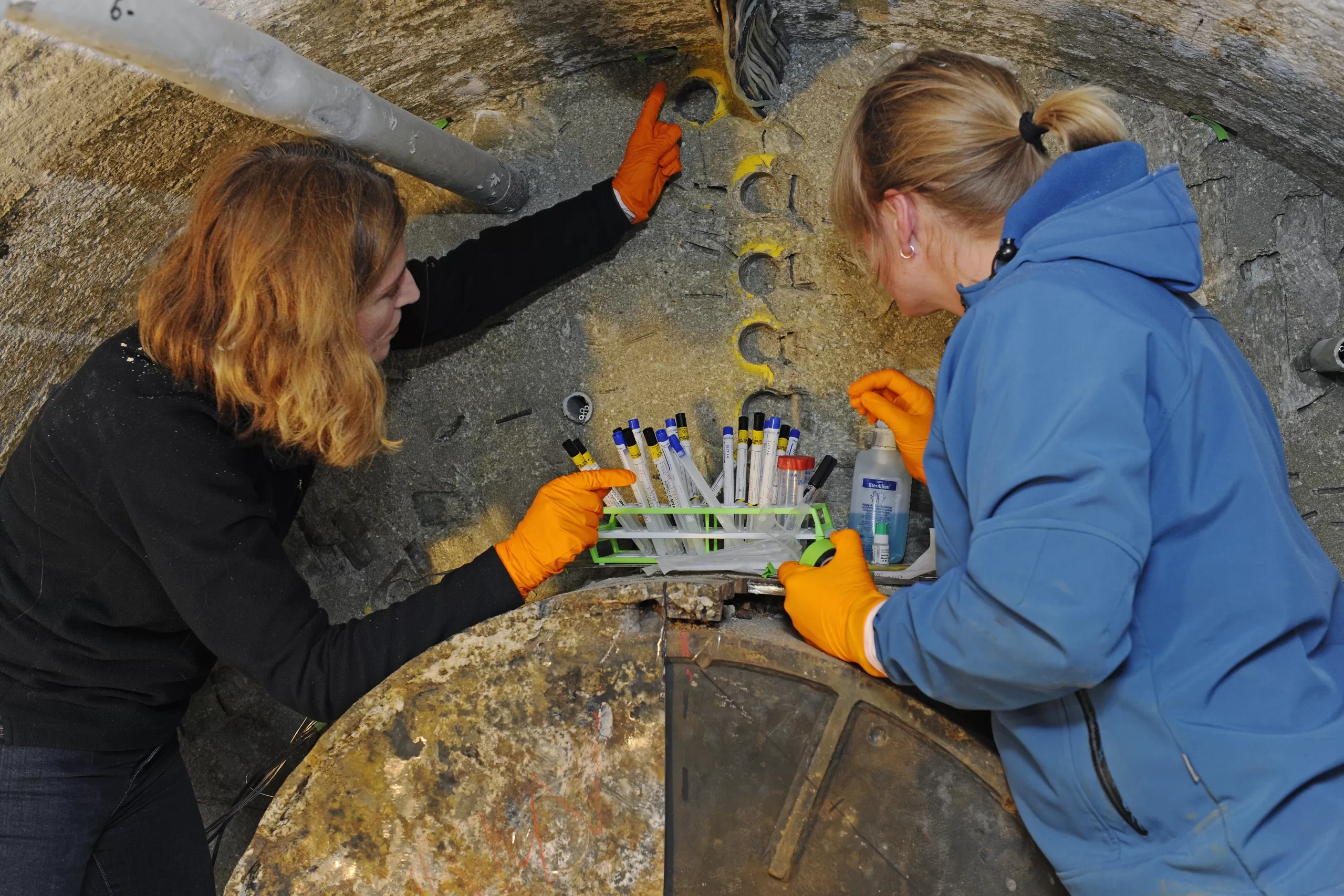
Experiment on disposal of radioactive waste – Test container to be excavated after 18 years
This signals the end of what is to date the longest 1:1 demonstration experiment in the field of research into deep geological disposal. During the excavation process, the scientists will proceed like archaeologists: layer by layer they will excavate through the test set-up and will collect samples following a defined pattern. The work will continue until the end of June.
The FEBEX experiment (Full-scale Engineered Barriers Experiment) was installed at the Grimsel Test Site in 1997 under the lead of the Spanish waste management organisation ENRESA. It consists of a 1:1 demonstration experiment of an emplacement tunnel for high-level waste. As it is not permitted to use radioactive waste in the experiments at the Grimsel Test Site, the heat production of the high-level waste was simulated using heater elements. The experiment is now being dismantled after 18 years. «FEBEX is the only experiment of its type to date that has run over such a long time period», explains Nagra project manager Dr. Florian Kober, who is leading the dismantling activities. The aim of the experiment was to investigate the effects of heat produced by the waste on the bentonite backfill material and the surrounding rock. «In addition, such full-scale experiments always teach us something about waste emplacement procedures» adds Kober.
Scientists obtained a first insight into the evolution of the experiment with the partial dismantling in 2002, which involved excavation of the first of the two containers. Of the more than 500 measurement sensors installed to monitor the experiment, more than 70% were still functional, explains Kober. «This cannot be taken for granted as the conditions in the tunnel are harsh, with temperatures between 80 and 100°C, high pressures and humidity.» The decision was made at that time to only partially dismantle the experiment. «This allows us to compare the results from 2002 with the new data that are now available after a further 13 years», explains Kober.
The Grimsel Test Site is a platform for international research on disposal of radioactive waste. 21 organisations from 12 countries (including the EU) are involved in the experiments. The dismantling of the FEBEX experiment is clearly of particular interest as 10 partner organisations have signalled their interest in being involved. Some of the partners, such as Sweden and Finland, plan to construct their deep repositories in granite, while Nagra is focusing on the Opalinus Clay as a host rock. Despite this, the results of the FEBEX experiment are still important for the Swiss programme. «This experiment provides us with important data on the mechanical, physical and chemical behaviour of the bentonite backfill material», explains Kober. The data are used to verify the results of computer modelling. «We use the models to make accurate predictions for new experiments – including experiments in the Opalinus Clay – and finally for a future geological repository.»
According to Swiss nuclear energy legislation, the producers of radioactive waste are responsible for its safe management and disposal. In 1972, the nuclear power plant operators and the Federal Government set up the National Cooperative for the Disposal of Radioactive Waste (Nagra) to perform this task. Nagra, which has its headquarters in Wettingen (AG), is the national technical competence centre in the field of deep geological disposal of radioactive waste.
Out of a strong sense of responsibility for the long-term protection of man and the environment, 100 employees are involved daily in performing this important work. The high level of competence is secured by targeted research programmes in two Swiss underground rock laboratories and intensive international collaboration.